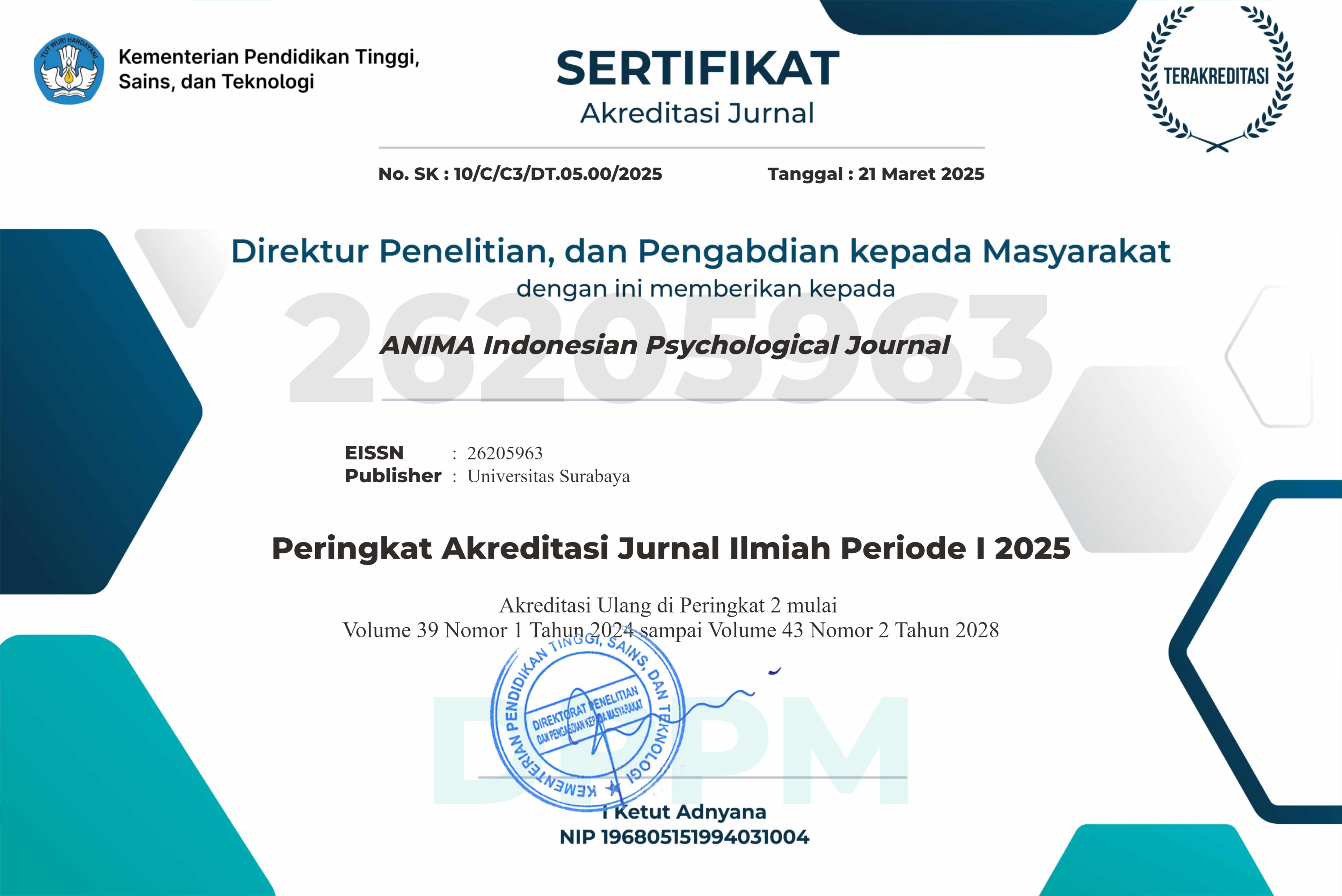Diagnostic Utility of the Wechsler Adult Intelligence Scale – Fourth Edition (WAIS-IV) Among Elders with Alzheimer’s Dementia
 Abstract Views:
1844 times
Abstract Views:
1844 times
 PDF - Full Text Downloads:
1281 times
PDF - Full Text Downloads:
1281 times
Abstract
The aim of this study was to examine the diagnostic utility of the Indonesian version of Wechsler Adult Intelligence Scale Fourth Edition (WAIS-IV-ID) in classifying between typical aging and Alzheimer’s dementia (AD). We administered the WAIS-IV-ID to 47 AD patients (28 females and 19 males; mean age 68 ± 8 years). Severity of dementia was classified into three categories: mild (20 patients), moderate (13 patients), and severe (14 patients). On the basis of receiver operatic characteristic (ROC) analysis, the areas under the curve (AUCs) of each index are as follows: (a) .83, 95% CI [0.738, 0.895] for Full IQ, (b) .88, 95% CI [0.81, 0.94] for Perceptual Reasoning, (c) .79, 95% CI [0.69, 0.86] for Processing Speed, (d) .78, 95% CI [0.69, 0.86] for Verbal Comprehension, and (e) .71, 95% CI [0.61, 0.8] for Working Memory. These AUC values indicate that the WAIS-IV-ID has moderate accuracy in identifying people with AD. This study also raised awareness for the necessity of a standardized process in translating and using cognitive tests, especially in clinical practices.
Downloads

This work is licensed under a Creative Commons Attribution-NonCommercial-ShareAlike 4.0 International License.
Articles published in ANIMA are licensed under a Creative Commons Attribution-NonCommercial-ShareAlike 4.0 International license. You are free to copy, transform, or redistribute articles for any lawful, non-commercial purpose in any medium, provided you give appropriate credit to ANIMA and the original Author(s), link to the license, indicate if changes were made, and redistribute any derivative work under the same license.
Copyright on articles is retained by the respective Author(s), without restrictions. A non-exclusive license is granted to ANIMA to publish the article and identify itself as its original publisher, along with the commercial right to include the article in a hardcopy issue for sale to libraries and individuals.
By publishing in ANIMA, Author(s) grant any third party the right to use their article to the extent provided by the Creative Commons Attribution-NonCommercial-ShareAlike 4.0 International license.

 DOI:
DOI:



